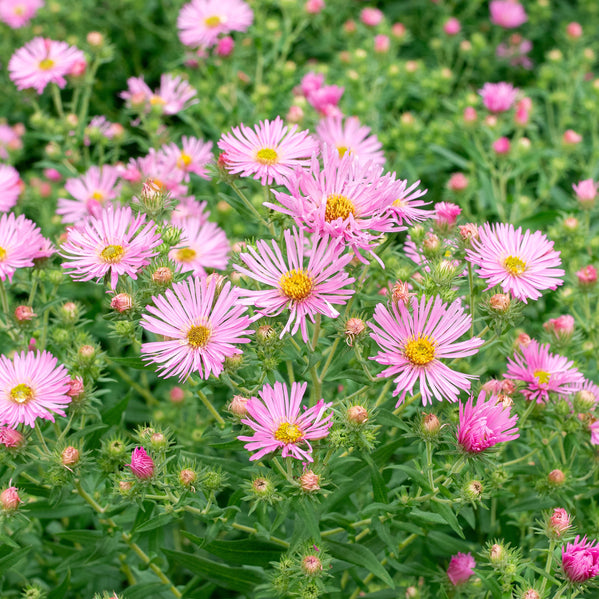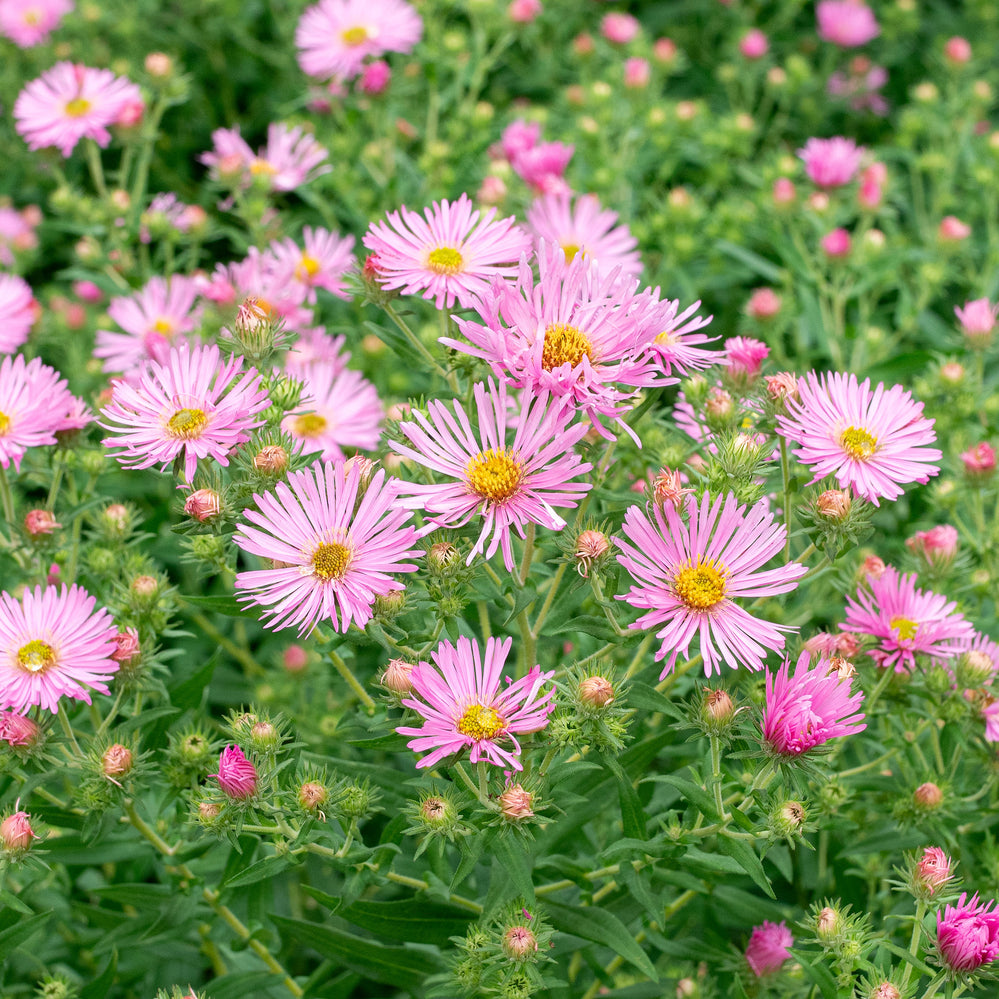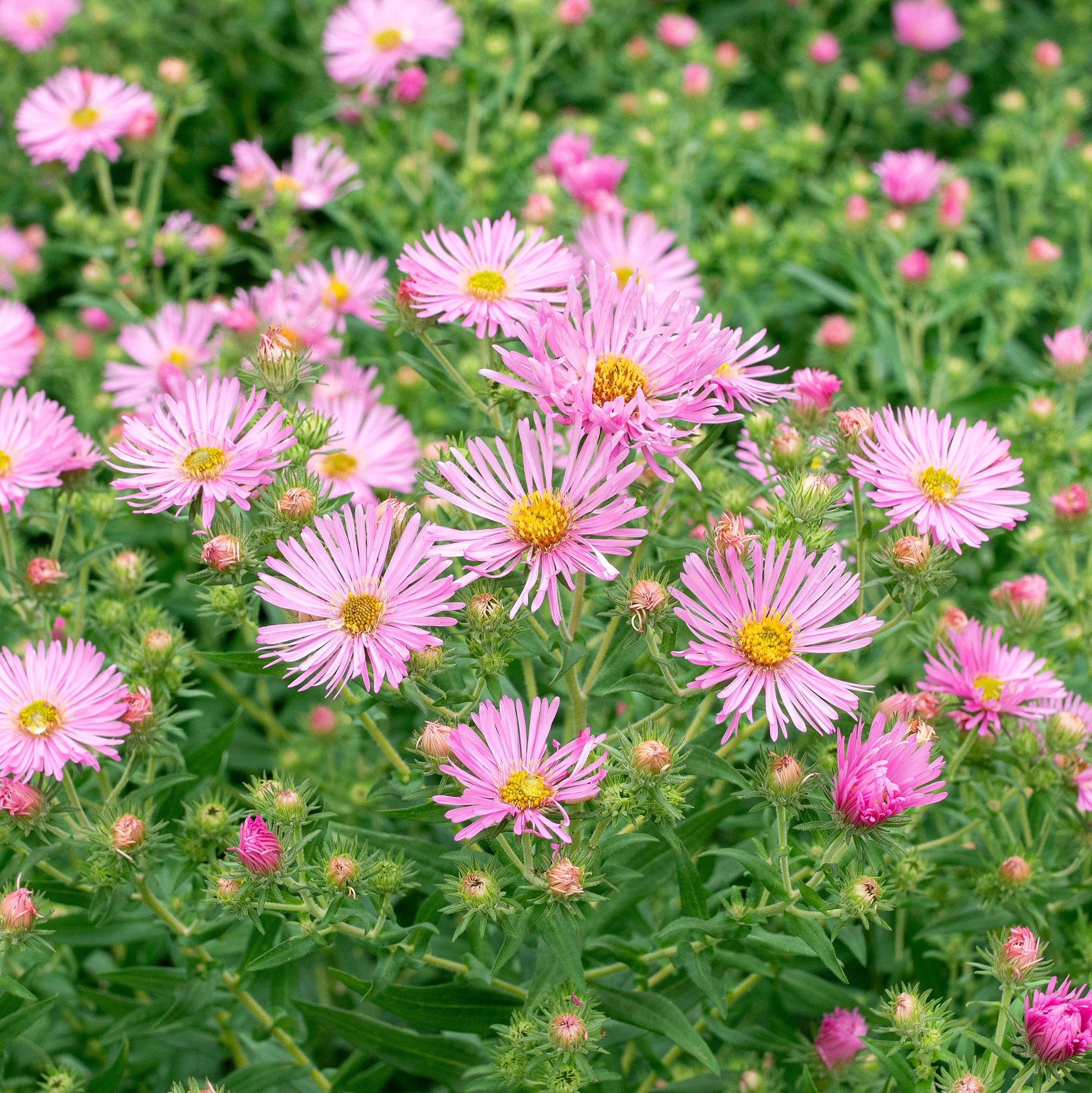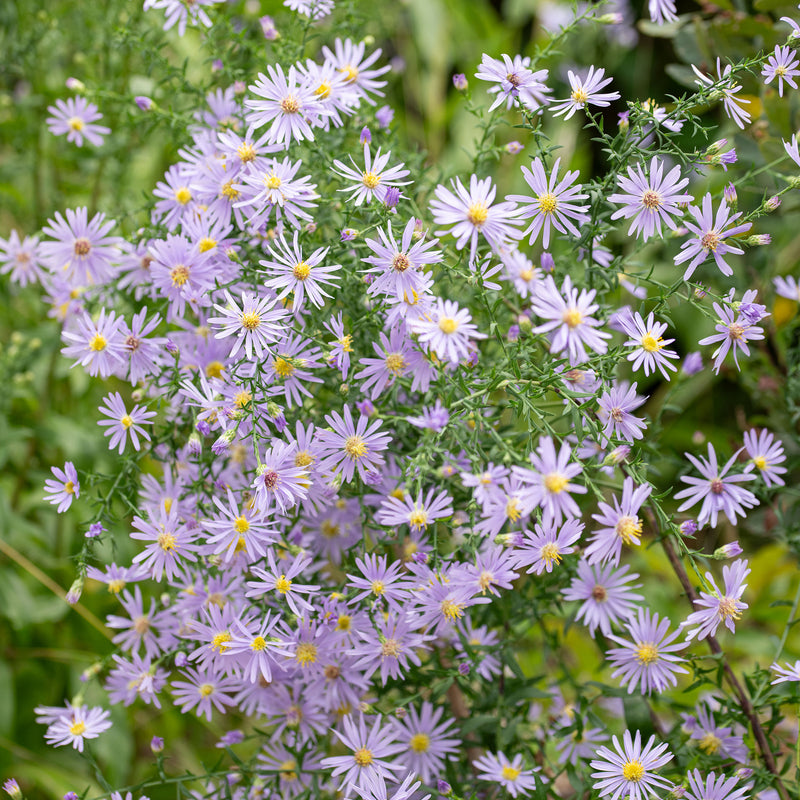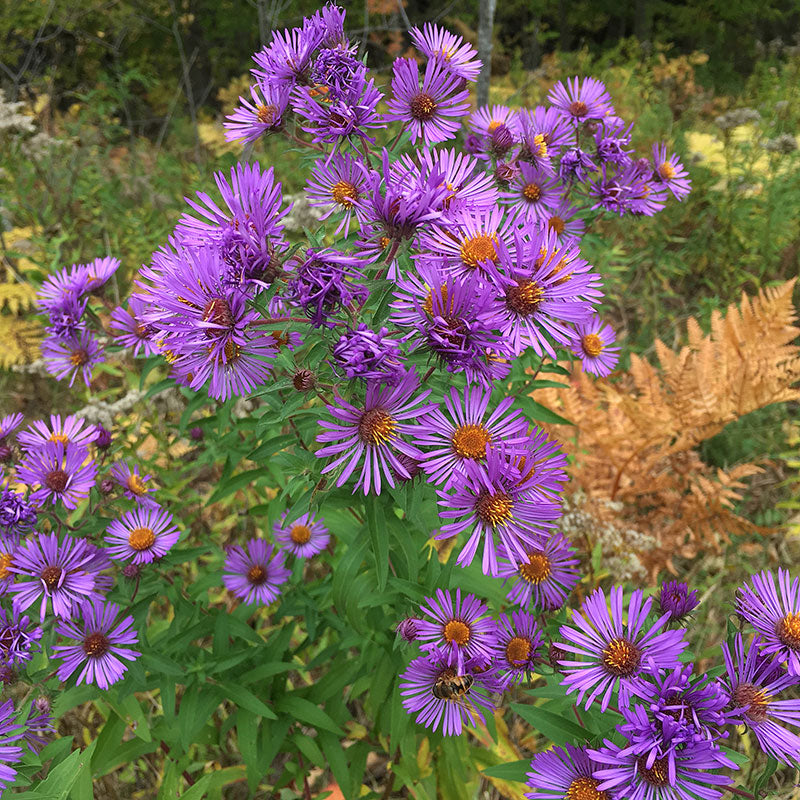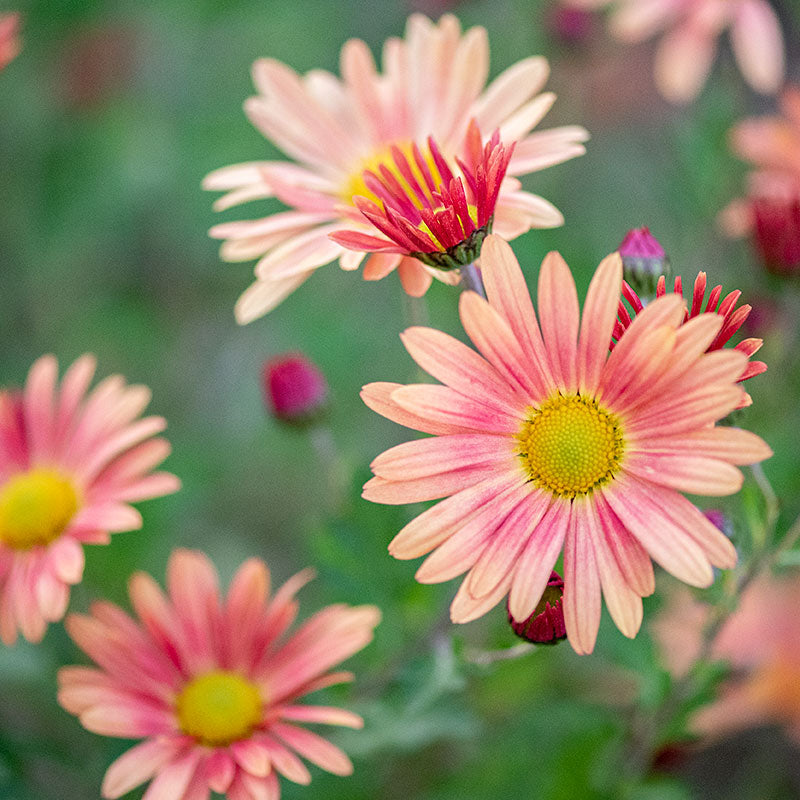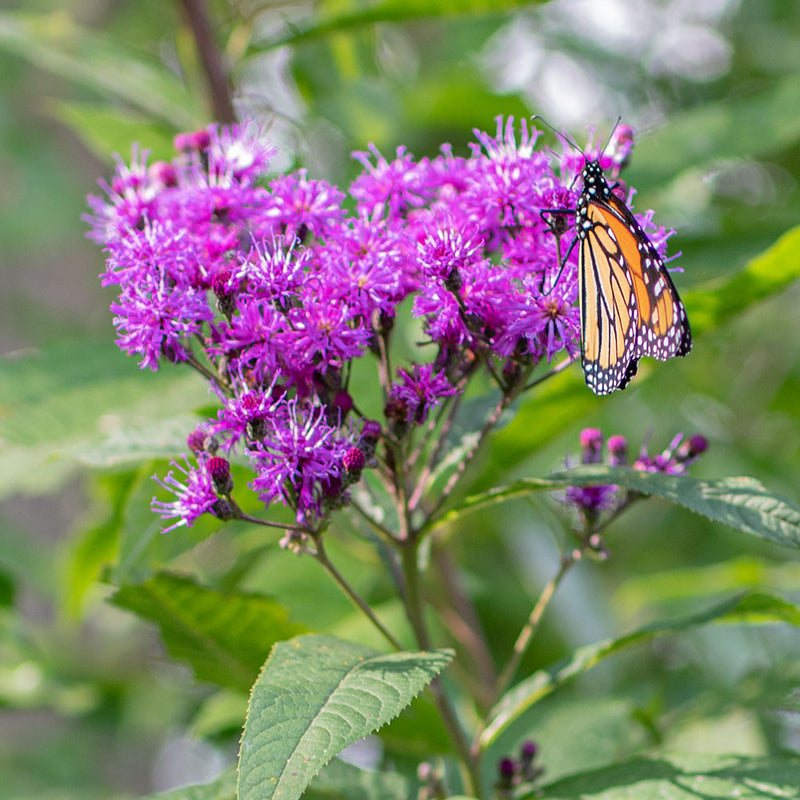Plant
Aster 'Honeysong Pink'
Aster novae-angliae syn. Symphyotrichum novae-angliae
Top-rated by the Chicago Botanic Garden for its floriferous nature, superior rust-resistant foliage, and large fringed 1" blooms. Some cut it back in June to keep it shorter. Still, we love its billowing nature, an extravagance of stems and flowers that garden designers of the past employed to cover much earlier blooming perennials. This selection flowers in early fall and captures the attention of all, including bees and rambling butterflies.
SKU #P8364
Currently Unavailable
Notify Me When Available
Growing Companions






























